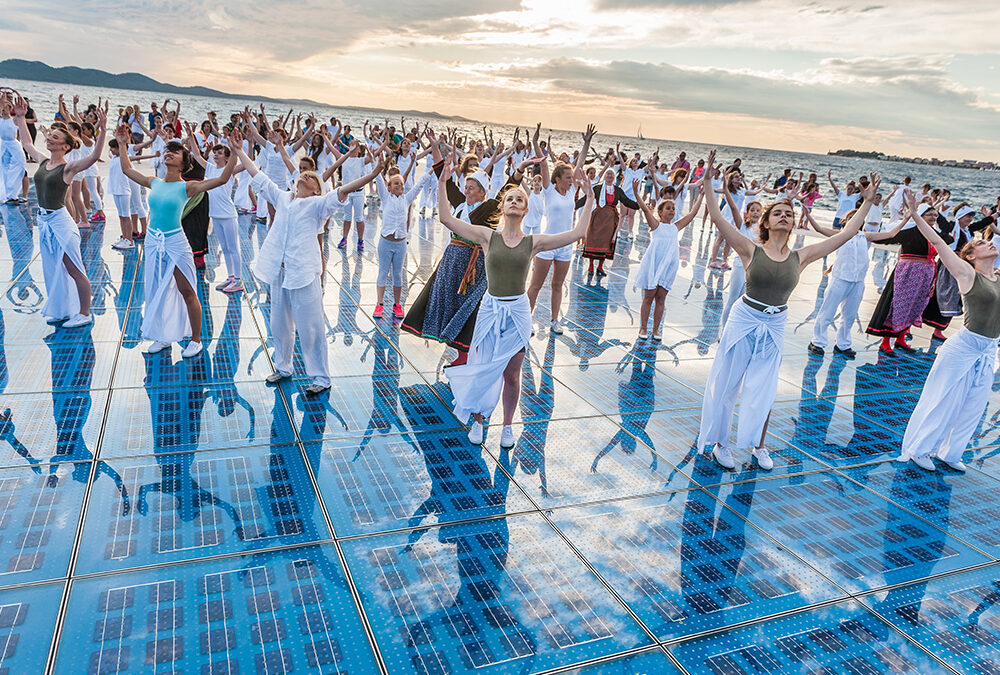Activity 1:
Water as Inspiration
GWD as a Model for Creating Dance
Introduction
There are countless ways to create dance. Exploring movement is one approach. Some of your students may be comfortable with exploring movement. If you ask these students to make a dance, they are ready to dive in. Other students may struggle with this concept, literally unable to move when asked. What movement explorations excite you and your students?
What makes it challenging for your students to explore movement? What makes it challenging for you to teach that exploring movement can aid in the creative process?
At GWD, we have found that exploring the movement of water in different forms helps people get unstuck in the creative process.
In this activity, you and your students are invited to create dance by exploring movement that is inspired by water. Suggestions are provided if your students are ready to create a ‘water dance study’.
Glossary of Terms
Choreographer:
Choreographers use a variety of sources as inspiration and transform concepts and ideas into movement for artistic expression.
National Core Arts Standards. (2015). Dance at a Glance. National Core Arts Standards.
Choreography:
The art of creating and arranging dances. The word derives from the Greek for “dance” and for “write.” In the 17th and 18th centuries, it did indeed mean the written record of dances. In the 19th and 20th centuries, however, the meaning shifted, inaccurately but universally, while the written record came to be known as dance notation.
The Editors of Encyclopaedia Britannica. (n.d.). Choreography. Encyclopedia Britannica.
Choreography:
Choreography is the art of arranging movement into a complete performance. It is the organization of movements specific to a dance, in a specific time and space.
Guerra, R. (2003). Apreciación de la Danza. La Habana, Cuba: Editorial Letras Cubanas.
Dance study:
A dance or choreographic study is an exercise in the craft of choreography. It should have a beginning, middle, and end, and be about something.
Blom, L. A. and Chaplin, L. T. (1982). The Intimate Act of Choreography. Pittsburgh: University of Pittsburgh Press.
Improvisation:
Improvisation is a spontaneous, transient creation – it is not fixed, it is not formed. However, it can range from totally free to more limited when some prompts or specific stimuli are given.
Smith-Autard, J. (2004). Dance composition. London: Routledge.
Movement motif:
A motif can be a single movement or a phrase of movement.
Motifs are organizing devices that give the artist’s imagination a start, and so ‘motivate’ the work. They drive forward and guide its progress.
Langer, S. (1953). Feeling and form. London: Routledge & Kagan Paul.
Preparation
Materials:
- Items to record non-verbal and/or verbal responses (marker/pencils/pens & paper)
- Optional: Digital camera
- Optional: Images and/or videos of local bodies of water
Things to do:
- Optional: Print out in large print action words related to water.
Resources:
Links:
- Water Images (PDF)
- Water Videos (MP4)
- The Global Dance (video)
- The Global Dance Movement Score (PDF)
- Language of Dance Movement Alphabet® (PDF)
Optional Readings:
- Smith-Autard, J. (2010) Dance composition. (6th Ed) London: A&C Black.
- Blom, L. A. and Chaplin, L. T. (1982). The intimate act of choreography. Pittsburgh: Pittsburgh Press.
Guiding Questions
Before teaching, reflect on your own experience.
- Why would it be important for your students to be inspired by water to create dance?
- What do you want your students to understand about creativity and exploring movement?
- What could prevent your students from being inspired by water?
- What other approaches could work for your specific students to be inspired by water?
Lesson Plan
Introduction:
- What is your experience with creating?
Leading questions:- When are you creative?
- What have you created?
- Describe what the process was like?
- What helped you create?
- What made it difficult to create?
- Where did you get your ideas to create?
- Why is creating things important?
- Today’s lesson will focus on creating ‘water dance studies’. You will also have opportunities to perform, as well as respond and connect to dance.
- If you get stuck, remember how you have already been creative.
- For advanced students: Also consider where choreographers get ideas for dances.
Big idea:- Choreographers use a variety of sources as inspiration and transform concepts and ideas into movement for artistic expression. One way choreographers create dances is by exploring movement.
© 2015 National Coalition for Core Arts Standards. All rights reserved. www.nationalartsstandards.org
- Choreographers use a variety of sources as inspiration and transform concepts and ideas into movement for artistic expression. One way choreographers create dances is by exploring movement.
Create:
- Create a water dance study. A water dance study is a dance exploration that is inspired by the movement of water.
- If you get stuck, explore the movement of water in different ways.
- Explore the movement from an experience with water that has left a strong impression on you.
Leading questions:- What were your actions?
- What were your sensations?
- What were your emotions? What were your ideas?
- Explore the movement of water by observing it in an image or video.
Leading question:- What do you observe?
- Explore what you have learned about the movement of water from someone else, for example another teacher?
Leading questions:- What are the properties of water that make it move the way it does? What natural forces influence the movement of water?
- From your explorations, choose words that inspire you to move like water (focusing on the action words, the verbs).
Leading questions:- What are the actions of the water?
- How does the water move or what is the quality of the movement of the water?
- Where does the movement occur in space?
- What is the shape of the water’s movement?
- Write or draw the action words you have chosen. Each action is one movement motif in your water dance study.
- Continue to create your water dance study by deciding on a sequence of your movement motifs, to make a repeatable phrase.
- Explore the movement from an experience with water that has left a strong impression on you.
Perform:
- Perform your water dance study.
- View the water dance studies of others.
- Learn and perform the movement motifs of the Global Water Dances’ Global Dance.
Movement motifs:- dehydration, raindrop, pool, stream, river, waves, ocean, splash.
Respond:
- Respond to your own water dance study.
Leading question:- What movement did you perform that was inspired by water?
- Respond to the water dance studies of others.
Leading question:- What movement did you observe that was inspired by water?
Connect:
- Make connections between today’s water dance studies and things that are meaningful to you.
Leading questions:- What have you learned about making dances from creating and observing water dance studies?
- What inspires you about water?
- To what extent did being inspired by water inform your dance-making?
- How does being inspired by water affect your relationship to water?
- What dances or issues, beyond your own experience, are you curious to learn more about as a result of being inspired by water?
- Continue to make more connections beyond your own experience.
Leading questions:- What was challenging about creating a water dance study?
- What are you still curious about with respect to exploring movement to create dance?
- What more would you need to better understand this approach to creating dances?
Reflecting Pool
After teaching, reflect on your experience with your students.
- What did you observe about the movement your students chose to explore?
- What did your students draw, say, and write about how their movement was inspired by water?
- What did you learn about dance-making upon observing how your students were inspired by water?
- What parts of the lesson resonated and did not resonate? Why?
- What will you do differently next time?
Here are reflections on Activity 1: Water as Inspiration, shared by GWD Educators.
- Reflecting Pool on Activity 1 by GARCIA Smile 2022-06-13 (PDF)
- Reflecting Pool on Activity 1 by HASHIMOTO Yuko 2022-06-16 (PDF)
- Reflecting Pool on Activity 1 by KINDRED Helen 2022-05-23 (PDF)
- Reflecting Pool on Activity 1 by RODRÍGUEZ VÁSQUEZ Norma Fernanda 2022-05-21 (PDF)
- Reflecting Pool on Activity 1 by SILVEIRA Juliana 2022-06-19 (PDF)
- Reflecting Pool on Activity 1 by VAN TONDER Hannah & NOKO Paul 2022-05-23 (PDF)
Possible Extensions
- In preparation for collaborating with colleagues (artists of other disciplines, partners from other institutions, teachers of other subjects, etc.), explore what inspires them about water, especially as it relates to the movement of water.
- Partner with a creative writer, poet, storyteller, etc. to explore relationships between inspiration, movement, and legends, myths, oral traditions, and stories related to water.
- Partner with a musician to explore relationships between inspiration, movement, and sounds related to water (e.g. water drums, water drumming, etc.).
- Partner with a scientist to explore relationships between inspiration, movement, and hydrology (e.g. bodies of water, chemical properties of water, states of water, the water cycle, forces that move water, etc.).
- Partner with a visual artist to explore relationships between inspiration, movement, and fluid visual media (e.g. watercolor, ink, etc.).
All Activities
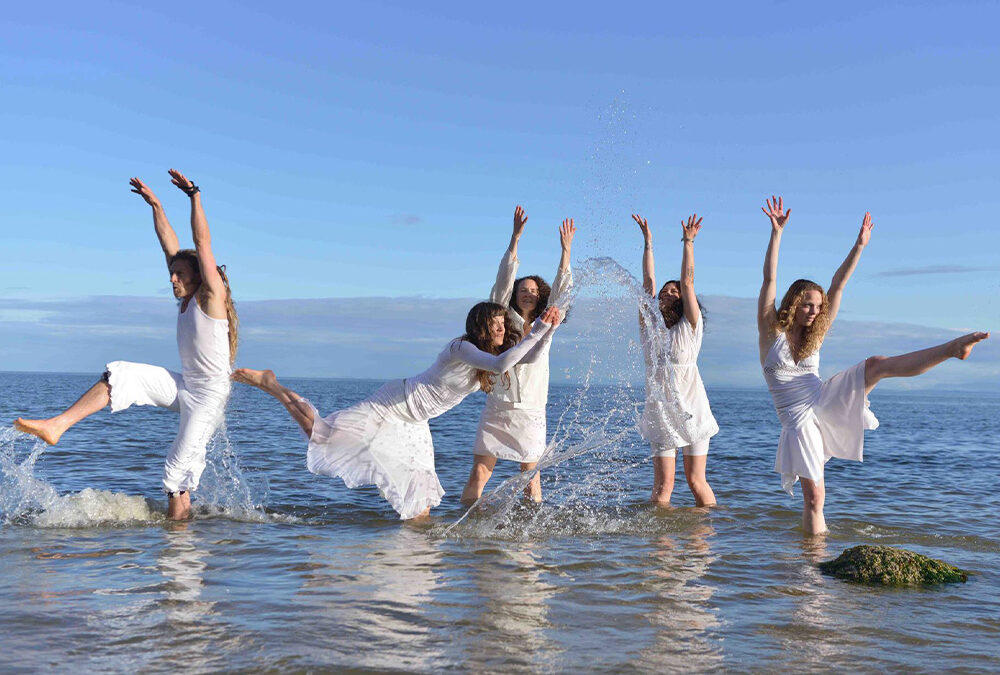
Activity 1: Water as Inspiration
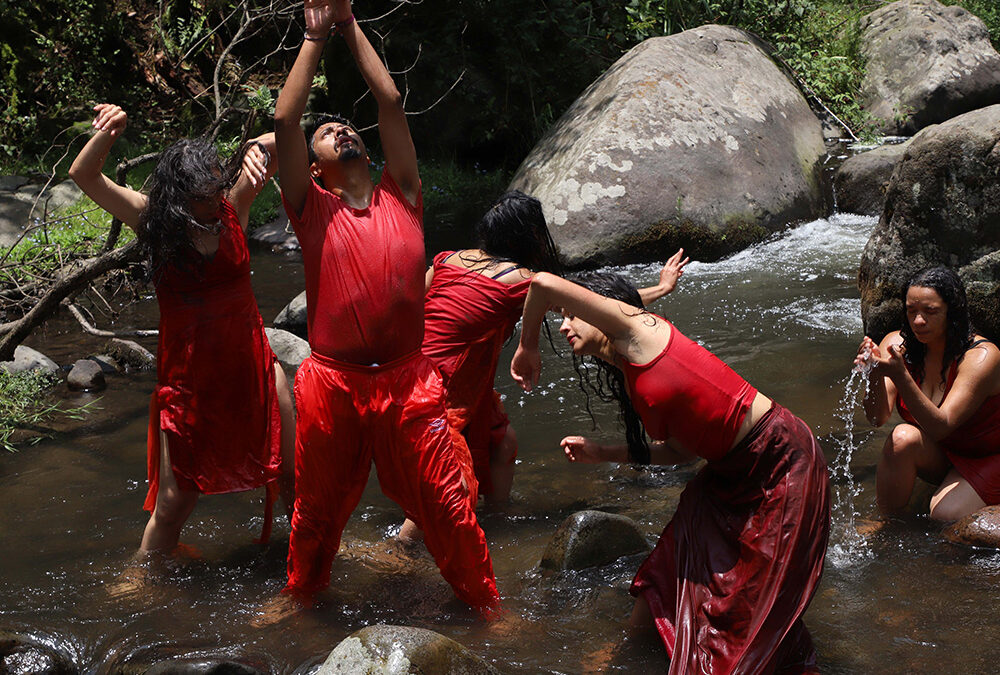
Protected: Activity 2: We Are Water
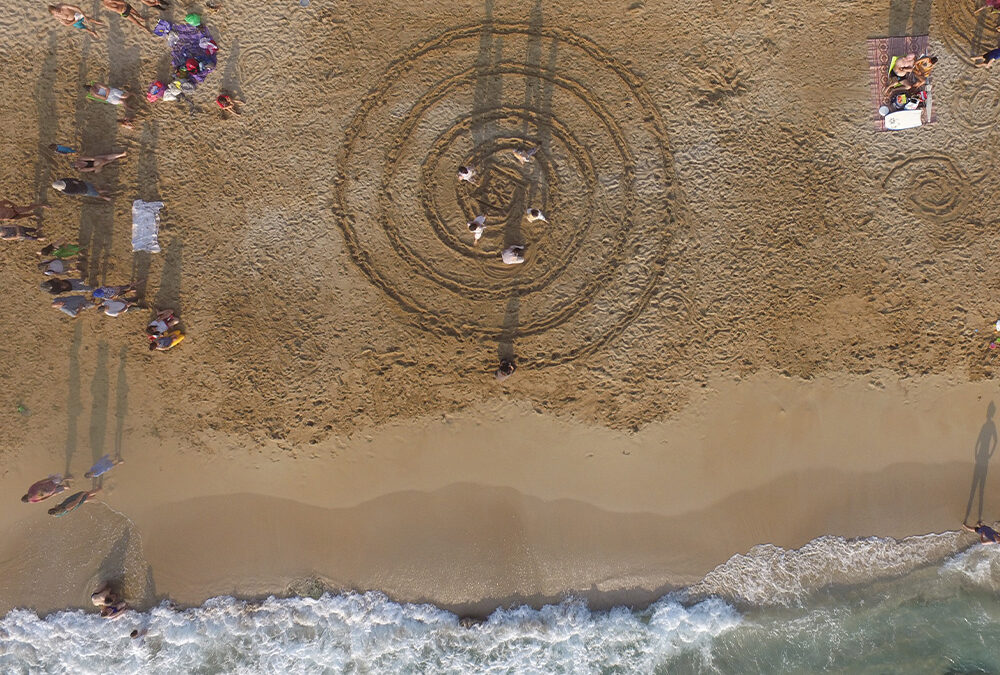
Protected: Activity 3: Site-specific Dance, Splash Mobs & More
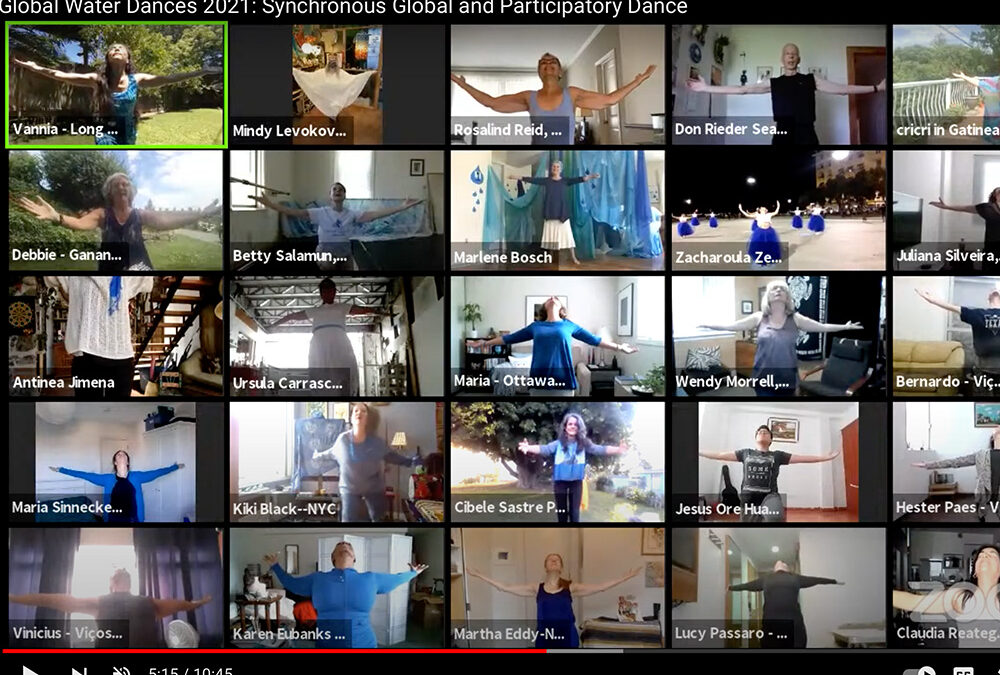
Protected: Activity 4: Think (& Dance) outside the Box
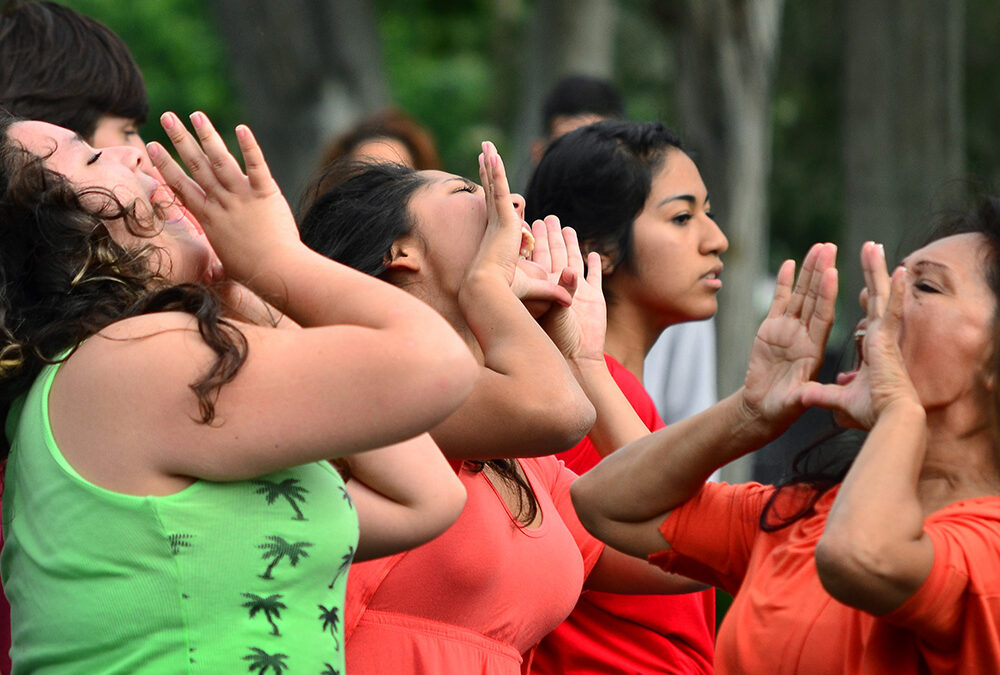
Protected: Activity 5: Partner Up to Protect Water
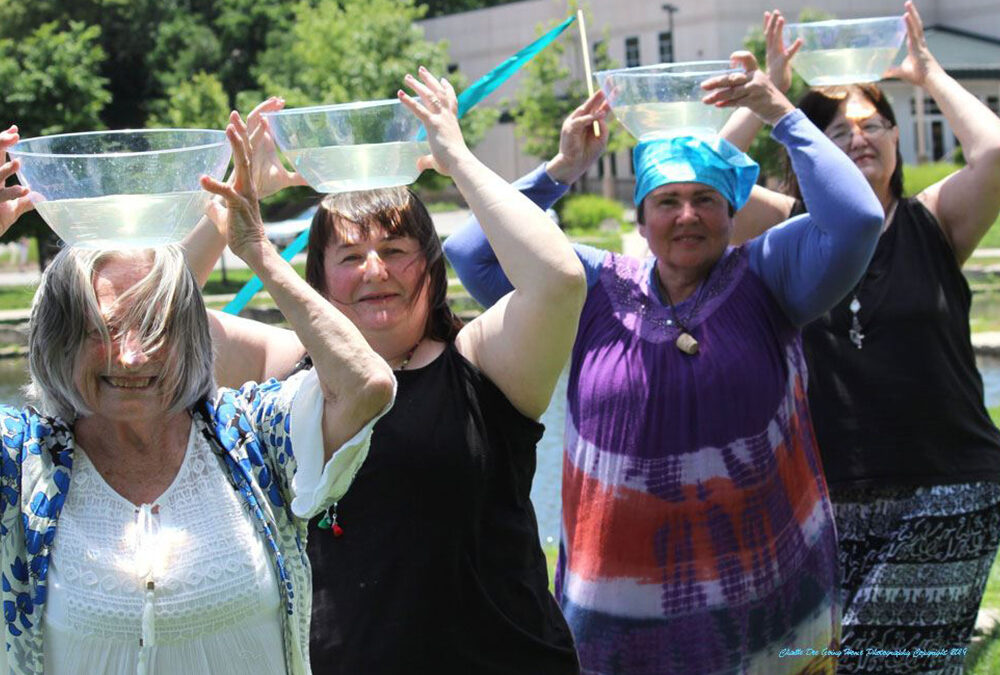
Protected: Activity 6: Water & Ritual
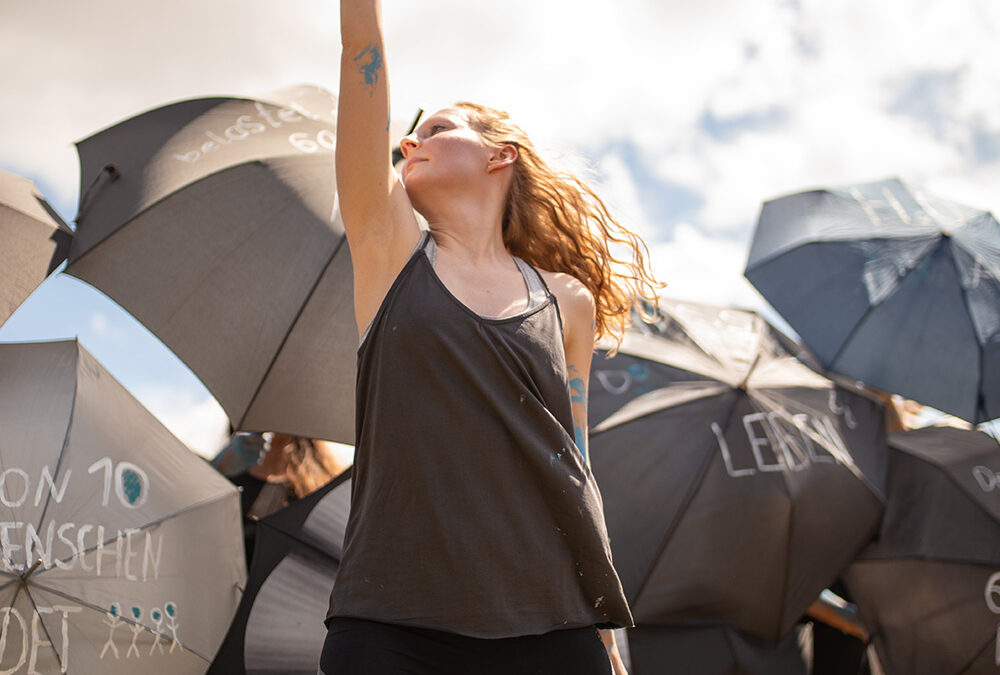
Protected: Activity 7: Think Globally, Dance Locally
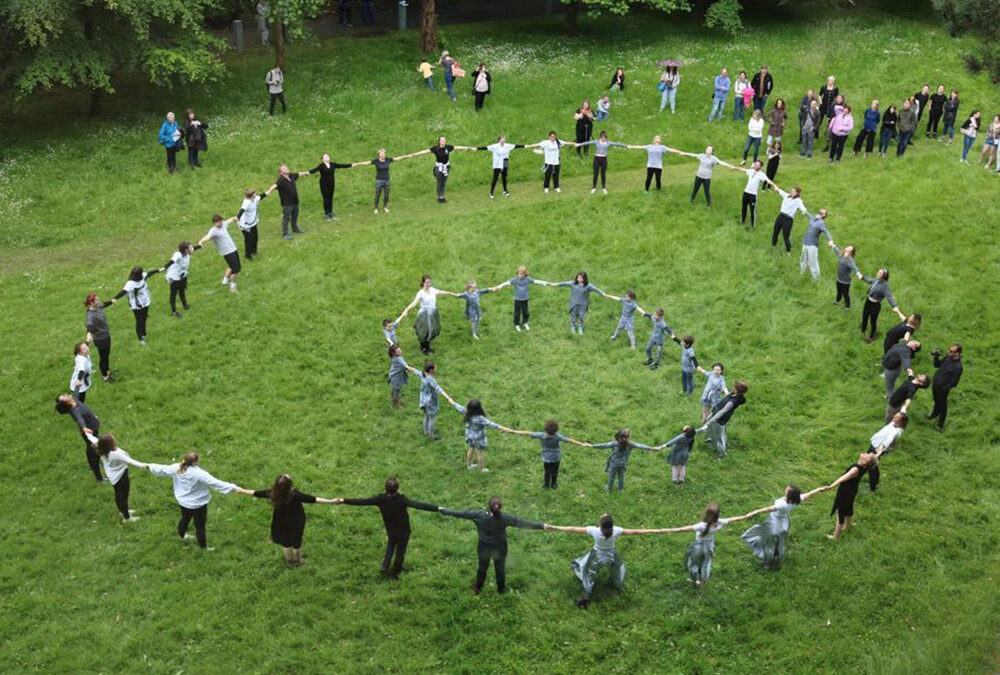
Protected: Activity 8: Movement Choirs
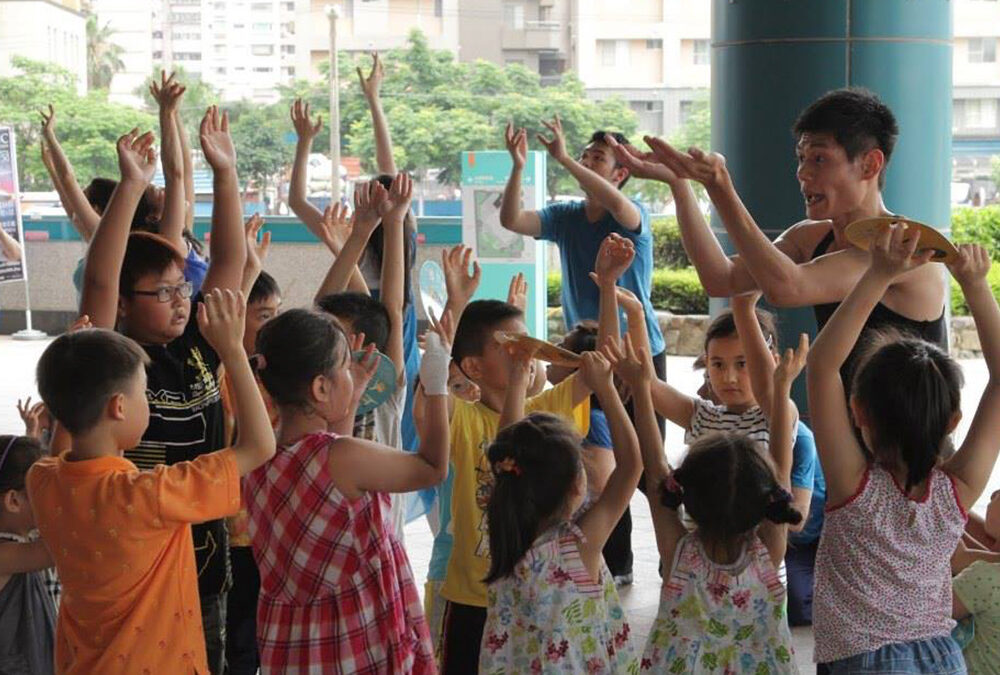
Protected: Activity 9: Dance for All, Water for All
